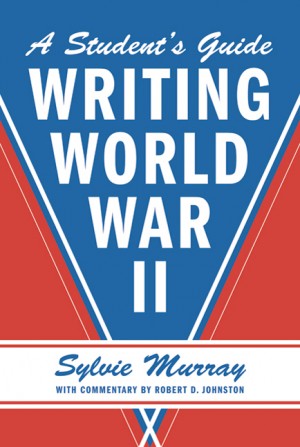By Sylvie Murray
In addition to providing service on the home front, women were called to join the military when on May 15 , 1942, Roosevelt signed a bill authorizing the formation of the Women’s Auxiliary Army Corps. The incentive to include women formally in the armed forces had come from organized women and female politicians who were determined to reap rewards for their wartime military service. Military leaders, most prominently Chief of Staff General George Marshall, appreciated the advantages to be gained from an influx of women into the armed forces, especially given the composition of the modern military organization, which required extensive support personnel for every combatant (88 percent of army personnel were in noncombat positions during the war). Access to women’s occupational skills, traditionally honed in of fice and service jobs, Marshall recognized, was crucial for his modern army. Indeed, the majority of women who served in the military did so in traditional “women’s jobs.”
At first, women were invited to volunteer to serve with, but not in, the army (as “auxiliaries” they were denied the same benefits as male soldiers and officers). After September 1943, when the “auxiliary” status was replaced by full military designation, women in the Corps received all the privileges of military service (including access to the benefits provided by the GI Bill at the end of the war), with one telling exception: unlike male military personnel, they did not have access to dependents’ benefits. As explained by Leisa Meyer, cultural prescriptions that military service was a masculine prerogative, and fears that women’s military service might upset traditional gender roles, were prominent in the congressional and public controversies that the WAC generated throughout the war. As she discusses in the case of allowances for
dependents, these “were crucial to the construction of male soldiers as both protectors and breadwinners. By barring female soldiers from access to these allotments House members revealed their uneasiness with the idea of either female protectors or female breadwinners.” Defenders of the bill also reinforced distinctions between “women” and “soldiers” when they insisted that women’s service was needed to release men for combat duties (in spite of the fact that the great majority of male soldiers did not engage in combat). Other objections to women’s service point to the usual—and inconsistent— portrayal of women’s vulnerability and power. In response to these concerns, the WAC, under the leadership of a conservative southern newspaper editor, Oveta Culp Hobby, maintained strict regulation to ensure women’s respectability while in the service and emphasized conservative gender roles. Not only did public relations efforts present “female soldiers as feminine in appearance, sexually respectable, and less powerful than their male counterparts,” but themes of patriotic sacrifice and selflessness dominated Hobby’s vision of female military service.
Although patriotic sacrifice was present in public discussion of women’s military service, and especially prevalent in the views of its conservative leaders, conflicting assertions of women’s self-interest and autonomy were also recruiting tools used to attract women into the WAC. Interestingly, Meyer describes the tension that existed between the WAC director’s vision of women’s self-sacrifice—their military service, she believed, should be a selfless act—and the reality that women were attracted to the Corps for less noble reasons. Young and Rubicam, the prestigious public relations firm retained to advise WAC recruiters in March 1943, noted the discrepancy: the WAC should move away from the “old unsuccessful idea that it’s a girl’s patriotic duty to join,” reported the advertising experts. They pressed for a greater emphasis on the more “glamorous” aspects of military service, such as the “opportunities for training, new skills, education, travel, and adventure women would find in the service.” In the end, a compromise was reached by which both sacrifice and personal gain were included in the recruitment material: “I joined to serve my country . . . and I’m having the time of my life!” proclaimed an attractive young white woman in uniform.
Women did not venture into the world of patriotic sacrifice with impunity. A careful cultural production was deployed to contain the potential disruptions to the social order that their real-time war contribution represented. That cultural production illustrates the gendered nature of obligations, and the malleability of wartime rhetoric.
Additional Reading and Images:
Women’s Army Auxiliary Corps
The WAAC’s First Summer
The European Theater of Operations









Excerpted from Writing World War II: A Student’s Guide by by Sylvie Murray.
Copyright © 2011 by Sylvie Murray.
Reprinted with permission from the publisher.
SYLVIE MURRAY is the author of Writing World War II. She teaches American history at the University of the Fraser Valley in Abbotsford, British Columbia.
